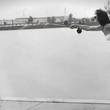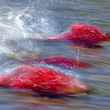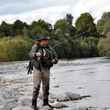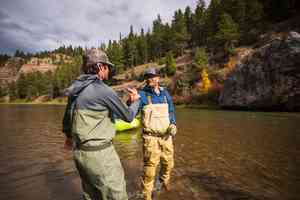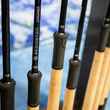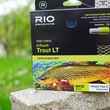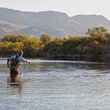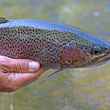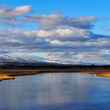Crest the ridge on Fisherman’s Drive overlooking the Henry’s Fork, and it’s easy to see why this river contains the closest thing to Holy Water that can be found without the Pope’s blessing. Even in the dead of winter, its banks blanketed in snow and its edges glassed with a thin sheen of ice, this river simply looks sacred.
Certainly there are more sacred stretches, however, but I’ve always found myself drawn to this length of the Henry’s Fork. Here, below the confluence with the Warm River, it slices through a foothill canyon and tumbles and rolls through a series of riffles and runs for about 10 miles before it slams against Ashton Dam. Fish in this stretch have shoulders—they have to.
And I love this run of water in the winter—starting about right now through March, as the days get a longer and the fleeting sunshine hits the river a few minutes longer than the day before, swarms of midges and, later, blue-winged olives, hatch along this reach and bring the rivers browns and rainbows to the top. Whitefish, too, live in this water, and they’re dependable winter fare, as well.



